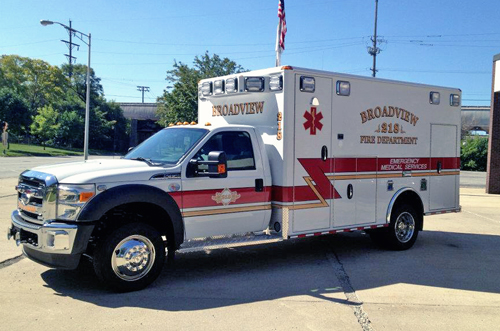The Broadview Fire Department received a new a Wheeled Coach Type I ambulance on a F-450 4×4 chassis.
This from Ryan Wyckoff:
Just saw Broadview’s new ambulance in their station this morning. Its a 2012 Ford F-450/Wheeled Coach. Not in service yet. Lettered as Ambulance 218. Old ambulance 218, Ford/Medtec will be taken OOS. Think that one is a 1996 or 1998.

Fire Service, Inc. photo

Fire Service, Inc. photo
thanks Josh & Martin





























